
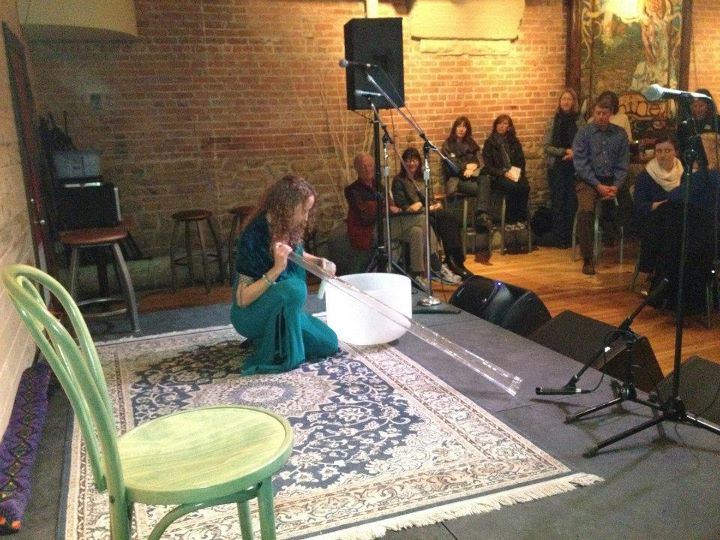
What is the Didjeridu?
The Healing Aspects
Circular Breathing
Modern Day Didjeridu
What Drew me to the Didjeridu
What is the didjeridu?
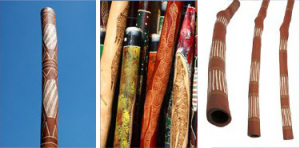
A didjeridu is a hollow tube that can be made of any material– wood, metal, glass, plastic, bamboo, clay, etc. It essentially amplifies the vibrations of one’s vibrating lips. Using various lip and tongue positions as well as different vocal sounds, an infinite number of sounds and harmonics can be created on this simple instrument. The didjeridu is a monochord– one note, containing an infinite number of harmonics– and therefore, according to Socrates, contains the “keys to creation.”
Some believe the didjeridu is the oldest known instrument, from the Australian Aboriginal culture (ab origine in Latin means “in the beginning”). The didjeridu is perhaps the most basic and simple instrument to learn, requiring no musical skill or sense of rhythm, although the very act of playing the didjeridu can teach both of these techniques. Eventually, a technique called circular breathing can be learned, which is not necessary to play the instrument, although once learned, allows for the creation of a continuous tone—like a drone. This is one of the most powerful pranayama practices– training of the use of the breath. It can bring the player and the listener’s consciousness into the place beyond the in breath and out breath, which is our essential immortal nature.
One can eventually add many complex overtones and vocals. The breathing and sound created invoke an instant state of meditation and can refine the energy flows within our internal systems. Playing the didjeridu clears out the channels of the body, creating vibrations that bring health and harmony into the physical, emotional, mental and spiritual bodies.
According to the Aboriginals, when we play the didjeridu we are connecting to the ancestors and primordial energies of the Dreamtime which created the world we live in.
Healing aspects of the didjeridu
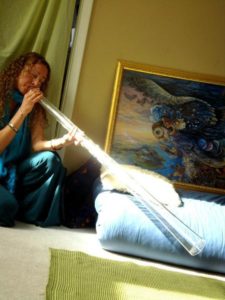
As part of my sound therapy practice, I use different sizes and types of didjeridus in the fields surrounding the body of the person I am working with, as well as other mostly indigenous, harmonic-rich instruments and modalities. I have found that these simple tools can assisted individuals in deep relaxation, expansive consciousness, and entering into altered and meditative states of awareness. Based on intention and entrainment, music done with love and consciousness is one of the most powerful tools to help us on our path. Humans have known and used these principles for ages.
People often report experiences of feeling a sense of merging with the environment, or a sense of “oneness” or commonality with all things. Sometimes there are amazing changes in their ability to heal from long-standing illness–feeling that being in this field of sound assisted them in activating their inner healing abilities– which is the goal. We each have an inner doctor, mystic, sage, and guide. Sometimes we just need the space and a little boost to remember this inner wisdom.
As far as Earth healing, Aboriginals believe that the didjeridu “re-creates creation,” insuring that the cycles of life on Earth will continue in a harmonious and healthy way. Playing the didjeridu is a way to pray for the Earth, and reminds us of our true roles as caregivers of the planet.
Playing the didjeridu also teaches us how to breathe fully and brings Spirit into our body more completely, which in itself is a healing experience.
History
 The didjeridu is the oldest known instrument, dating back to perhaps 50,000 years ago. Before the Europeans visited Australia 200 years ago, this instrument was known only to the Aborigines of Australia. At ceremonies or coroborees, the didjeridu provided musical accompaniment to dances, telling stories of creation and other myths of their culture and of life on Earth. The Aborigines consider themselves as caregivers of the Earth, stewards of this planet and all of its various life forms. Playing the didjeridu is part of the continual prayer which constitutes their cultural life focus. Hopefully more of humanity can join into this collective prayer.
The didjeridu is the oldest known instrument, dating back to perhaps 50,000 years ago. Before the Europeans visited Australia 200 years ago, this instrument was known only to the Aborigines of Australia. At ceremonies or coroborees, the didjeridu provided musical accompaniment to dances, telling stories of creation and other myths of their culture and of life on Earth. The Aborigines consider themselves as caregivers of the Earth, stewards of this planet and all of its various life forms. Playing the didjeridu is part of the continual prayer which constitutes their cultural life focus. Hopefully more of humanity can join into this collective prayer.
Circular Breathing
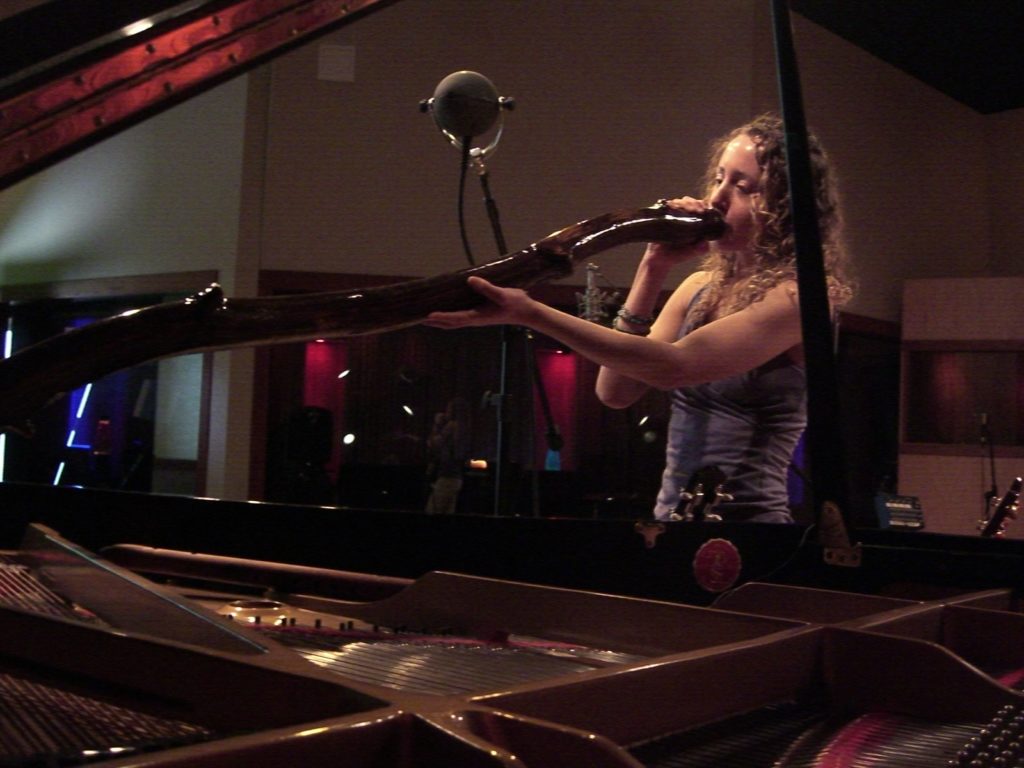
Circular breathing is a process of taking air in through the nose while squeezing air out of the mouth to keep a continuous stream of air circulating. A good example of how to do this would be to take a mouthful of water, and squeeze a fine stream out like a fountain. While doing this, one takes a quick breath in through the nose while squeezing the cheeks to keep the continual stream going.
Another example would be to put a straw in a glass of water and blow bubbles–then keep the bubbles going continuously as you take in a quick breath through the nose.
Once this technique is mastered, it can be applied to the didjeridu or any wind instrument which seals the lips completely (Native American flute, trumpet, clarinet, etc.).
An important thing to remember is that it is not essential to circular breathe in order to play the didjeridu. It is more important that one can produce a tone easily and clearly, before attempting to circular breathe. It will be much easier to first get completely comfortable with playing the fundamental tone, and allow circular breathing to evolve later. If we approach the instrument with reverence and from a sincere, humble place, from whatever point within our soul that was touched when we first heard the sound of this instrument… we will be guided. My experience is that as we connect with the Dreamtime by simply producing the fundamental tone, we will be uploaded with information from the ancestral realm about the instrument and how to connect with it and the playing techniques in a deeper way.
Modern Day Didjeridu
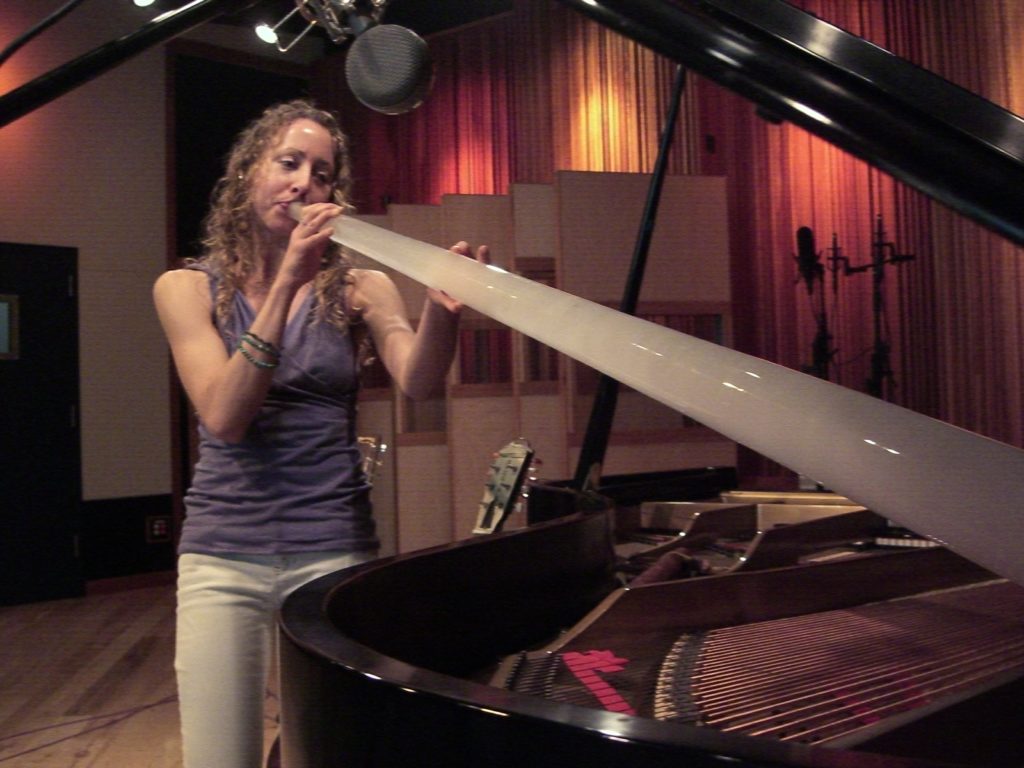 For over 50,000 years the didjeridu was known only to the Aboriginals of Australia. This amazing instrument can now be found in every corner of the world, and has been incorporated into world music globally. The versatility of the didjeridu has allowed for it to be blended with almost every type of musical instrument and style– from rap, acid and hard rock, to classical, ambient and meditative. Some Aborigines have expressed that it is now time for the planet to have access to this healing instrument, to help the Earth and all beings connect back into the primal tone of creation– the infinite OM, the original sound of the universe from which everything has arisen.
For over 50,000 years the didjeridu was known only to the Aboriginals of Australia. This amazing instrument can now be found in every corner of the world, and has been incorporated into world music globally. The versatility of the didjeridu has allowed for it to be blended with almost every type of musical instrument and style– from rap, acid and hard rock, to classical, ambient and meditative. Some Aborigines have expressed that it is now time for the planet to have access to this healing instrument, to help the Earth and all beings connect back into the primal tone of creation– the infinite OM, the original sound of the universe from which everything has arisen.
In the Hawaiian culture, a common term for fair-skinned people is “haole” (pronounced “how-lee”). The literal translation of this means “without breath.” It can also translate to “without Spirit.” This is only true if we are not using our full lung capacity, and if we are not allowing the full voltage of our Spirit to enter into our bodies. Then we can treat others and the Earth as if they are just other “things,” and not part of us, if we are not feeling the unity of creation and all beings. In my experience, the didjeridu is one of the most powerful tools to help facilitate this process of breath embodiment and re-connection.
For most cultures around the world, the word for spirit and the word for breath are the same word. Not in the English language… hence maybe white people have been given the name “haole,” having forgotten how to breathe fully and properly. I have been teaching people to play the didjeridu since 1998, and it does seem true that most of us use a small fraction of our lung capacity (and also a small fraction of our DNA and brains…) We must re-learn how to breathe deeply into our lungs, allowing for the breath (Spirit) to fully inhabit our bodies, down into our lower bellies, lower back, throughout our being. The didjeridu teaches us how to breathe once again, requiring us to re-learn how to use our full lung capacity. This in itself is a healing process.
What Drew me to the Didjeridu
My story began in early 1993—I was in my last semester at the University of Arizona in Tucson studying Molecular and Cellular Biology. I had recently had a near-death experience, on November 22, 1992, and was still often walking in-between the worlds. As I was going to class one day, I saw a lady doing hair-wraps in the shade of a nearby palm tree. I noticed a long wooden pipe lying next to her, and I was immediately and magnetically drawn to it. I walked up to her and said with a bit of urgency, saying “what is that?” She replied, “A dream pipe, also known as a didjeridu.” I responded, “play it for me,” and she did. The sound unlocked a key within me, it was a turning point in my life. I said, “I need one now.” This is where my journey with the didjeirdu began, with an agave didjeridu made by Allan Shockley, which he called a “Dream Pipe,” referring to the Aboriginal Dreamtime.
I could produce a tone right away, and circular breathing took about a week to learn (but about four years to make effortless). But from the start, this instrument changed my life, and has re-patterned me from the inside out. If you feel called to learn this sacred tool for healing ourselves and the earth, I strongly encourage you to do so.
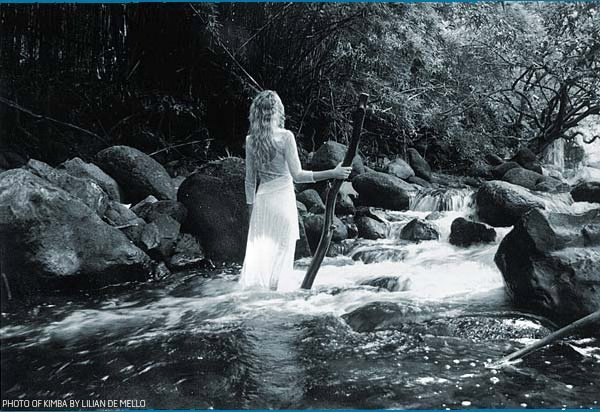
Ever since that time, this instrument has become an integral part of my life, and has benefited my Earthwalk in every way. It has taught me how to truly breathe, and instantly cleared out my chronic sinus congestion completely. It has brought increased health, vitality, peace of mind, and overall well-being to me, and later assisted others I have connected with in adding in a powerful tool for self-healing. It has connected me with countless beautiful beings whom I would have never met otherwise, and has shown me how to connect to fundamental frequency of Earth and all of creation.